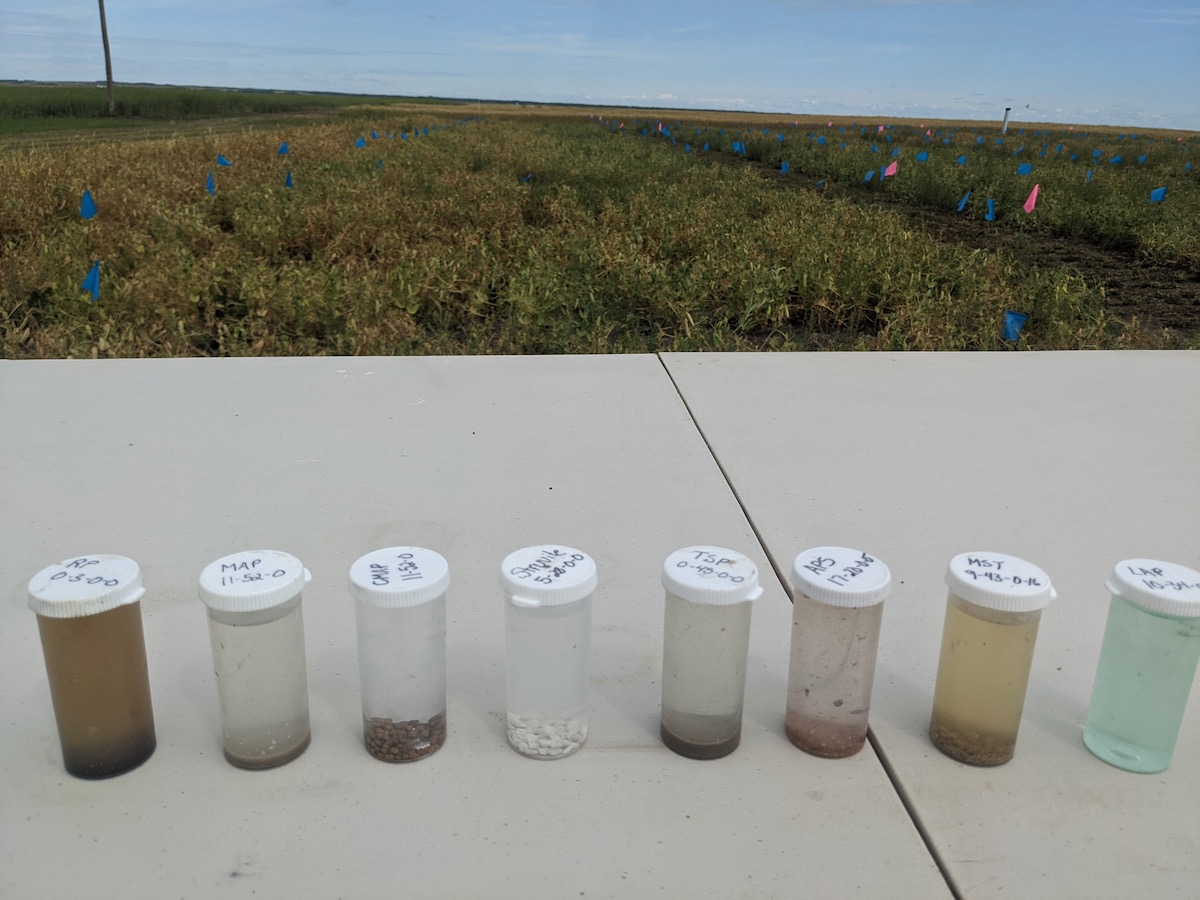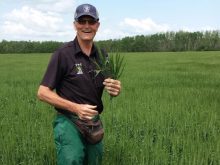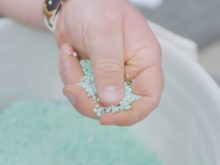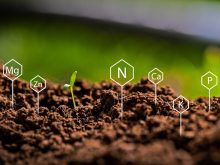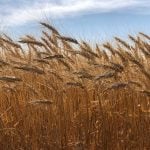While conducting my PhD studies over the past three years, I have been fortunate to do a deep study on phosphorus (P). It is a fascinating nutrient often characterized by a series of seemingly contrasting truths. For example, while it is considered a nutrient essential for all life, it can also act as a pollutant when it enters surface water bodies in the form of runoff water, leading to eutrophication.
As a second example, while soils typically contain large amounts of total phosphorus (on average 1,000 kg P ha-1), generally only a relatively small portion exists in the plant-available form. In most situations, P is bound strongly in soil through several processes collectively referred to as fixation. The P that a plant can access is that which comes in contact with the plant root when dissolved in the soil solution by diffusion and root interception.
The plant-available portion is often insufficient to meet crop demand, resulting in the need for external inputs of P to maximize crop production. These inputs can exist in either organic or inorganic forms, including manure or inorganic fertilizers, respectively. Regarding the latter, the farmer often has many potential options for P fertilizer products, which they can use to meet crop P demand. Which should the farmer choose? Are all P fertilizers created equal? Will they perform equally in all soil conditions? What factors should they consider in making their decision?
Read Also
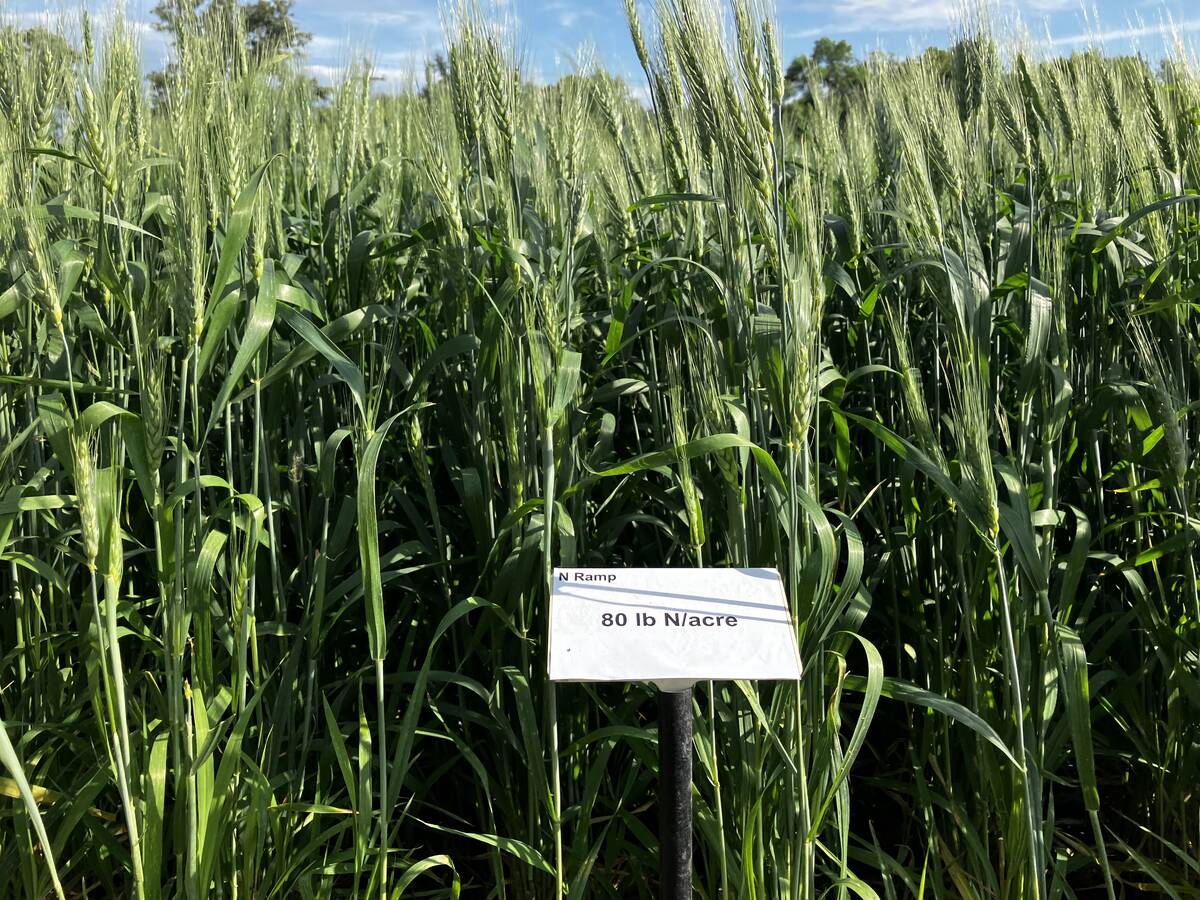
Ramp up your nitrogen efficiency in winter cereals
Nitrogen ramps are a tool to help farmers hone their fertilizer rate for the best, most cost-efficient winter wheat or fall rye crop.
One of the main objectives of my PhD research is to address these questions. After three years of field research, one factor worth consideration, and which I suggest is often overlooked, is the relative solubility of a P fertilizer product.
While we know plant availability of a P fertilizer product is influenced by its solubility, little research has explored how this property interacts with soil characteristics to influence agronomic objectives of promoting crop P uptake and yield. Further, as certain soil properties such as organic matter content, pH and texture tend to vary within a field, I was interested in understanding how the agronomic performance of a P fertilizer source may change across the landscape.
Beginning in spring 2021, this research was conducted as a three-year crop rotation study at three small-plot sites across Saskatchewan. Each of the three sites was established at a unique landscape position in the field, including upper slope, midslope and lower slope. The upper and lower slope positions were found within a single field site in the brown soil zone near Central Butte, Sask., (CB in the table), sharing a common management history and separated by approximately 100 metres. The midslope site was in the dark brown soil zone at Discovery Farm Langham.
Each site was similar in certain soil properties at the beginning of the study, particularly soil test P level. Other properties such as percentage organic carbon (OC), pH, and electrical conductivity (EC) varied across sites and reflected typical patterns across landscape positions (see Table 1). The experimental design included treatment combinations of eight P fertilizer sources (see Table 2) applied at both a low and high rate (20 vs 40 kg P2O5 ha-1) and placed either as a side-band or spring surface broadcast.


Three years of research have consistently shown that the agronomic performance of certain P fertilizer products varied across the three landscape positions. Differences in available soil water status appeared to be the primary driving factor. For example, under soil conditions where available soil water status was limited, such as at the CB upper slope and Langham midslope sites, the crop P uptake from application of low solubility P fertilizer sources such as rock phosphate was also limited due to its poor mobility and availability to the growing crop under restricted soil moisture conditions.
However, the soil conditions causing these limitations were different at the two sites. For example, nearly twice the percentage of OC was measured in the surface (0-15 cm) soil at the CB lower slope site compared to the CB upper slope site (2.7 vs 1.5 per cent, respectively). Conversely, at the Langham midslope site, elevated EC in the surface soil compared to the CB upper slope (1.3 vs 0.1 dS/m) site restricted soil-available water.

Beyond the influence of EC, soil pH also played a role in restricting P mobility, where across all three years, the elevated surface pH at the Langham midslope site caused lower crop P uptake compared to the CB lower slope site. Soil pH has a controlling influence on how tightly P is bound to soil minerals, with soil P mostly bound to calcium under basic soil pH, and not available for the crop to take up in this form. Under these conditions of basic soil pH, application of MAP+ES caused the greatest crop P uptake in each year, where the acidifying effect of the oxidation of the elemental sulphur to sulphate reduced the soil pH in the fertilizer reaction zone, improving the soil P availability to the crop.
While significant energy is understandably devoted to selecting the right rate as a part of a 4R Nutrient Stewardship approach, my suggestion to those interested in managing soil P fertility is to also give thought to the right source. In particular, I encourage consideration of how soil available water status may vary across the landscape and how this variation may influence the selection of the “optimal” P fertilizer source for a given site.
While these considerations are likely to be less important in situations where soil moisture is not limited, and therefore where soil P mobility is less restricted, there may be certain situations where selection of the optimal P fertilizer source may greatly improve our ability to prescribe the right combination of 4R P stewardship practices.


